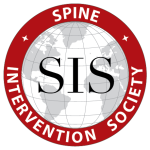Peripheral neuropathy refers to the many conditions that involve damage to the peripheral nervous system, the vast communication network that sends signals between the central nervous system (the brain and spinal cord) and all other parts of the body. Peripheral nerves send many types of sensory information to the central nervous system (CNS), such as a message that the feet are cold. They also carry signals from the CNS to the rest of the body. Best known are the signals to the muscles that tell them to contract, which is how we move, but there are different types of signals that help control everything from our heart and blood vessels, digestion, urination, sexual function, to our bones and immune system. The peripheral nerves are like the cables that connect the different parts of a computer or connect the Internet. When they malfunction, complex functions can grind to a halt.
Nerve signaling in neuropathy is disrupted in three ways:
- loss of signals normally sent (like a broken wire)
- inappropriate signaling when there shouldn’t be any (like static on a telephone line)
- errors that distort the messages being sent (like a wavy television picture)




